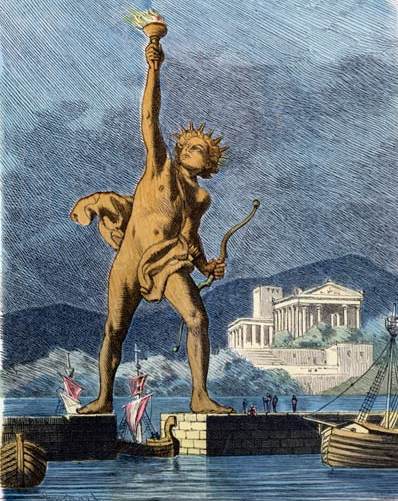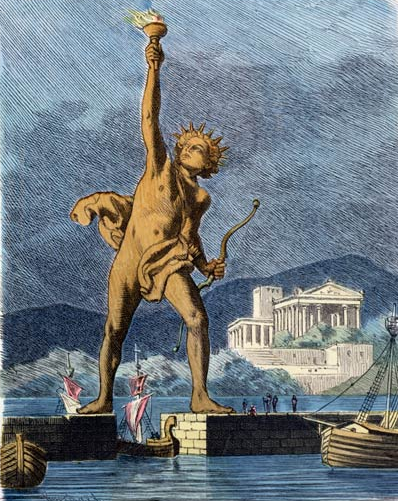
Was France Demanding the Return of the Statue of Liberty Predicted in a 1,500-Year-Old Prophecy?
Last month, a low-level French politician demanded the return of the Statue of Liberty, the iconic symbol of freedom gifted to the US and unveiled in 1886. Standing over 300 feet tall in Ellis Island in New York Harbor, the statue symbolizes freedom for all immigrants and Americans. But an enigmatic prophecy from almost 1,500 years ago may suggest that the destruction or removal of this iconic statue may herald the appearance of the Messiah.
The strange story began almost 1,500 years ago with Rabbi Pinchas, a noted kabbalist and mystic living in Northern Israel, and his wife, Rachel of Kifar Bar’am. After years of infertility, they were blessed with a son they named Nachman Chatufa in the Hebrew year 4632 (872 CE). According to the legend, Nachman was born on the eve of Rosh Hashanah. The baby began speaking esoteric secrets immediately after being born.
Rabbi Ben-Tsiyon Mutsafi, a noted Jerusalem Kabbalist, related the details in a lecture in 2008.
“Above the ceiling of the sky is heaven in Asiya (spiritual world), and an angel is in charge of it,” the newborn said. “It contains many windows and openings. Every opening has an angel who punishes the wicked of this world and accepts the prayers of the righteous.”
The people were shocked to hear a description of what was happening in heaven on the eve of the holy day.
“Above that, there is a second heaven,” the baby said, naming it, the openings, and the angels. Nachman went on to describe a third, fourth, and fifth heaven. The most amazing wonders were in the seventh heaven. All of the Torah sages, returning souls, and the Jews killed in the name of heaven were residing there.
When he finished describing the seventh heaven, he began to describe the throne of glory and the Merkava, the “chariot,” of God as described by the prophet Ezekiel, and all of the angels.
His father, shocked at hearing the forbidden secrets spoken aloud, reprimanded him. The child fell silent and didn’t say another word until the day of his twelfth birthday.
When he turned twelve, Rachel pleaded with her husband, who prayed until the boy began to speak. Again, the child revealed esoteric secrets, relating five prophecies concerning the days before the Messiah.
As soon as he finished giving over his prophecy, the child fainted and died, as his parents looked on. That’s why he was called Nachman Chatufa, or the ‘plucked’ one, because he was plucked from this world while he was still a youth.
His words were recorded in Aramaic in Nevuat HaYeled (Prophecy of the Child). The language the prophecies were written in was very obscure, and the information was given over by way of hints and riddles. It was taught that Nachman’s prophecies would only be understood in the days before the Messiah.
Rabbi Yaakov Natan, an American Torah scholar, deciphered the fourth section of Nachman’s prophecy. The original Aramaic text is difficult to understand but it means, “When the idol of Rhodes will be destroyed, know that the end of the wicked kingdom is near.”
The Colossus of Rhodes was a statue of the Greek sun god Helios, erected on the Greek Island of Rhodes by Chares of Lindos in 280 BCE. Standing over 100 feet tall, it was one of the Seven Wonders of the Ancient World It was constructed to celebrate the successful defence of Rhodes city against an attack by Demetrius I of Macedon, who had besieged it for a year with a large army and navy.
The Colossus stood for 54 years until an earthquake destroyed it. The ruin remained one of the wonders of the ancient world and was even described in the Talmud.
The resemblance to the modern Statue of Liberty built by France in 1876 is astounding.

Indeed, the sculptor Frédéric Auguste Bartholdi stated that the Colossus of Rhodes inspired him. In 1903, a plaque engraved with words from “The New Colossus,” an 1883 poem by Emma Lazarus, was added.
The statue was initially offered to Egypt to celebrate the opening of the Suez Canal. It was designed as an ancient Egyptian female fellah or peasant, robed and veiled, holding a torch aloft. The original plan was to erect the statue at the entrance to Port Said, where it would serve as a lighthouse to guide ships.
The Egyptian ruler and the canal’s designer rejected the plan, so the unveiled version was offered to the US.
Rabbi Natan suggested that Nachman had a vision of this Colossus of Rhodes, which was destroyed 700 years before he was born in northern Israel.
“Many times, the prophet is shown a specific vision, but he doesn’t understand what he is seeing,” Rabbi Natan wrote. “This is explicitly stated by the prophets Daniel and Zechariah. Sometimes, the vision is a metaphor for future events. Sometimes, the visions show the events themselves, but the prophet is limited and can only describe them using his own vocabulary, using concepts and events that he is familiar with.”
“In his vision, the child, Nachman, saw the Statue of Liberty but didn’t understand what he saw and couldn’t put words to it. Only about 120 years ago were we finally able to understand what Nachman saw: a sign of the coming redemption, the destruction of the Statue of Liberty, a copy of the Colossus of Rhodes.”
This prophecy was also given by Rabbi Shimon Dahan, who passed away in Paris, France, about three years ago. Rabbi Dahan said in 2005 that the Statue of Liberty would be destroyed at a certain stage of the final redemption.
“When this happens, we will know that the Messiah is about to be revealed,” Rabbi Dahan taught.
While the destruction of the Statue of Liberty seems unlikely to most, a few weeks ago, a French member of the European Parliament, Raphaël Glucksmann, demanded that the US return the monument his country had gifted to the US in 1876.
“We’re going to say to the Americans who have chosen to side with the tyrants, to the Americans who fired researchers for demanding scientific freedom: ‘Give us back the Statue of Liberty,’”local outlet France 24 reported.
“‘We gave it to you as a gift, but apparently you despise it. So it will be just fine here at home,’” Glucksmann said at a convention of his Place Publique movement.
“Absolutely not,” said White House Press Secretary Karoline Leavitt in a press conference when asked if the U.S. would give it back. “My advice to that unnamed, low-level French politician would be to remind them that it’s only because of the United States of America that the French are not speaking German right now. So they should be very grateful to our great country.”
Returning the statue would be a monumental endeavor as it was transported in 350 pieces from France.
The burial sites of the child, Nahman, and his father, now a shrine, still exist in northern Israel.
The post Was France Demanding the Return of the Statue of Liberty Predicted in a 1,500-Year-Old Prophecy? appeared first on Israel365 News.
Israel in the News